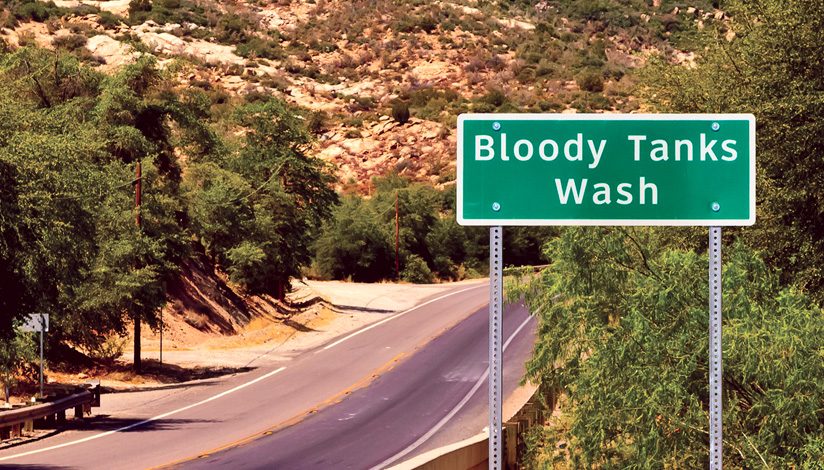
WHAT’S IN A NAME?
Older Globe and Miami residents will no doubt be familiar with the Bloody Tanks Wash, and the historic episode that occurred there that is said to have been responsible for its naming. All that remains these days are roadmarkers for the creek, though once there was a picnic ground that chronicled and commemorated what was one of the most dramatic events in local history.
The Bloody Tanks Massacre, also known as the Battle of Bloody Tanks, was a significant and controversial event in Arizona’s history, occurring in early 1864 during the tumultuous period of the American Civil War. This incident highlights the intense and often violent conflicts between Native American tribes and European-American settlers as they vied for control and survival in the Arizona Territory.
In the early 1860s, the Arizona Territory was a landscape of tension and conflict. The withdrawal of Union troops during the Civil War left settlers vulnerable to attacks and raids by Native American tribes, particularly the Apache and Yavapai, who sought to defend their ancestral lands from encroachment. Livestock thefts and violent encounters were common, fueling animosity on both sides.
In January 1864, a series of livestock thefts near the Agua Fria area prompted King S. Woolsey, a prominent rancher and militia leader, to organize a retaliatory expedition. Woolsey assembled a group of settlers and allied Maricopa warriors to pursue the raiders. Their pursuit led them to a location near present-day Miami, known for its natural water tanks—hence what would become the name “Bloody Tanks.” Upon encountering a group of Apaches there, Woolsey’s party initiated a parley under the guise of peace negotiations. However, during the discussions, the settlers opened fire on the Apaches, resulting in the deaths of at least 19 Native Americans. This premeditated attack during a supposed peace meeting has been a focal point of historical scrutiny and debate.
The Bloody Tanks Massacre is shrouded in controversy, with varying accounts of the events leading up to and during the incident. Some narratives suggest that Woolsey’s group poisoned food offered to the Apaches during the parley, leading to additional deaths—a claim that has been debated among historians.
King S. Woolsey, central to this event, remains a contentious figure. Born in Alabama around 1830, he arrived in Arizona with his wife, Mary, in 1860. After pursuing various menial jobs, from a mule driver to a hay cropper, he became a rancher. Along the way, he also achieved a notable reputation as an Indian Fighter. While some view him as a pioneering leader who played a crucial role in Arizona’s early development, others criticize the harshness of his methods. The Bloody Tanks Massacre serves as a stark reminder of the complex and often tragic interactions between settlers and Native American tribes during country’s westward expansion.
Today, the site stands as a historical landmark, prompting reflection on the region’s turbulent past and the enduring impact of such events on Native communities and settler descendants alike.
